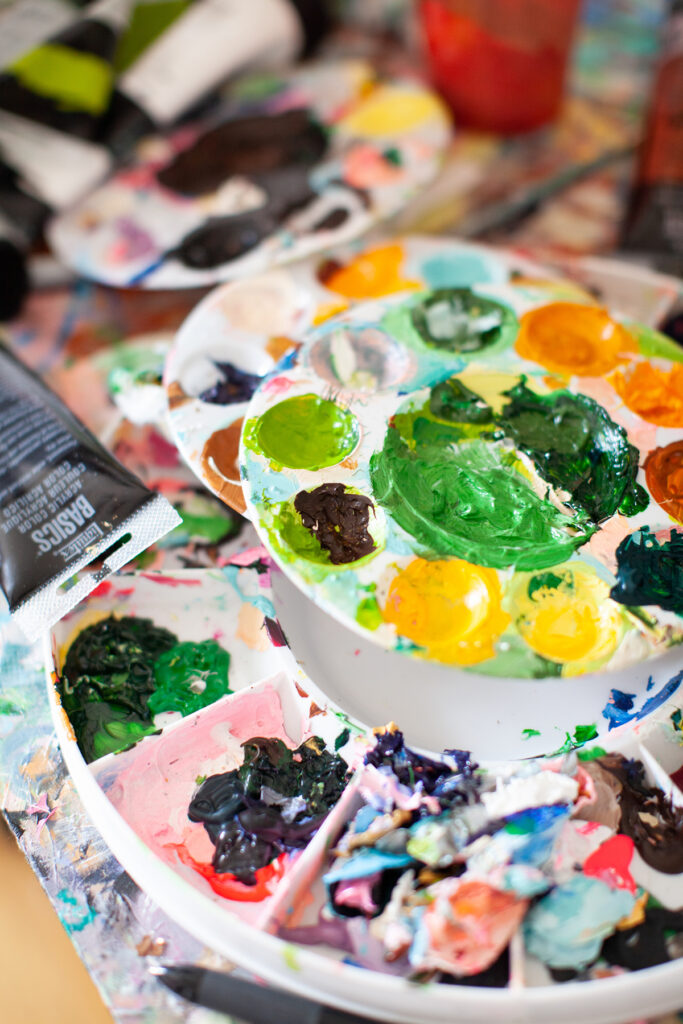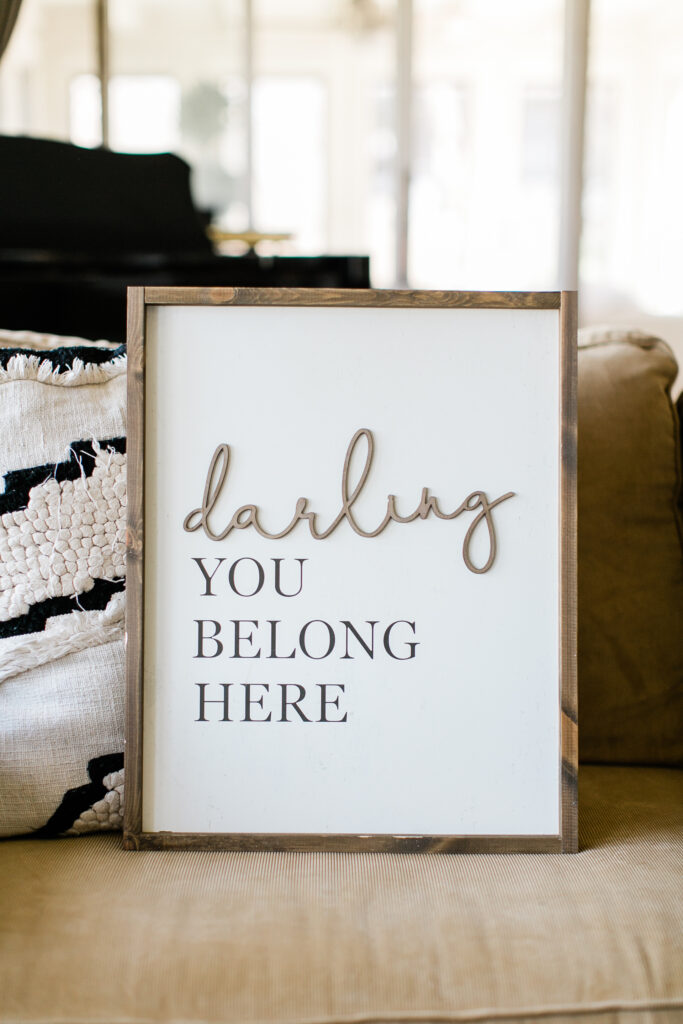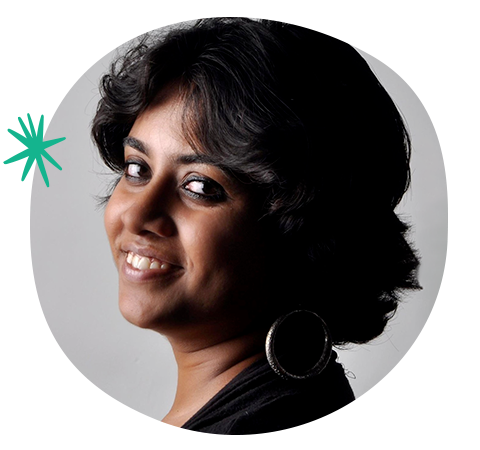As a surface designer, do you work alone or on a team? Most often, you’re by yourself and IF you can afford help, maybe you have a part-time assistant. Still, they’re probably not working out of the same space as you, especially since the pandemic.
The reality is that it can get quite lonely for us as artists. A lot of us are introverted and like to live a private life. We often work long hours, and some of us juggle a full-time job, a family, and children.

During the pandemic, things were already lonely at home. And the situation around the world was affecting my mental health more than I cared to admit. I had a one-year-old baby and dealing with postpartum depression. Add to that the constant fear of falling sick. There were also mounting financial commitments and the risk of either losing our jobs or not getting paid.
I turned to art to navigate through these stressful times, but it wasn’t enough. Since we weren’t going out and meeting up with people anymore, social media sneaked its way into our lives. Mindlessly scrolling through the Instagram feed in the name of inspiration made me feel like I wasn’t good enough as a surface designer. I desperately wanted to do more than teach English to high school students, but impostor syndrome was looming over my head like a dark cloud.
No matter what I did, I always seemed stuck in a creative rut, waiting for inspiration to strike. But that inspiration took a long time, and not without the realization that no matter how introverted I was, I craved connections with other artists.
Why is community so important for an artist?
Coming from a family where art has always been considered a hobby and nothing more, it was important for me to get validation for all the effort that I was putting in. Surface design was an alien concept and even though my family wanted to support me, they couldn’t quite understand why I was so passionate about it.
I was getting frustrated trying to explain to people around me that I was serious about pursuing a career as a surface designer and that one day in the near future, I would quit my day job. Had it not been for the community of artists that I was gradually becoming a part of, I would have given up on my dreams.
So if you are struggling like I was, here are some major ways that being a part of a community can help you grapple with mental health issues, and cope with feelings of anxiety, dejection, and low confidence.
Related Article: Why Making Mistakes Is a Good Thing
Motivation and encouragement
Feeling unmotivated now and then is a common scenario — artist’s block is real. A network of other artists and designers can be crucial in providing some much-needed support and motivation. Participate in groups where artists understand mental illness and prioritize mental health. They encourage you to keep going in moments of self-doubt when you feel like giving up.
Accountability
Goals are best achieved when shared with an accountability partner or group. A community, large or small, can ensure you stay on track and avoid overwhelm as you work towards those big dreams. You don’t necessarily have to be in the same stage of your journeys, but you can still keep checking on each other’s progress.
Inspiration
There’s a common misconception that people with mental health disorders are creative geniuses. But that’s just half the story; if mental illness goes unaddressed, it can be detrimental to our creativity. A community of artists who ‘get you’ can provide the inspiration that as creatives we often seem to lack.
Feedback
An artist’s profession is mostly isolating and that’s why we need to take a step back and analyze our work from time to time. This process becomes a little easier when we have a group of friends we are comfortable receiving feedback from. Positive criticism and suggestions to improve can be invaluable and help us grow as designers.

Sense of belonging
Despite our private lives, there comes a time when we realize that connections matter. As a one-man army managing an art business, you often want to have a safe space to share your thoughts or to just belong. A community is a perfect place to do so without harboring the fear of being judged.

Learning to talk freely about your art
So often, we shy away from bragging about our art — we label the ability to talk about the work we do as a cheap marketing tactic. But we mostly love the art we make, right? So, why should we be uncomfortable talking about it? It is only by being a part of an artist community that we can get over such preconceived notions and learn to be more open about our art, our processes, and our big ideas.
Advice, support, sharing experiences
I’m telling this from experience that for some of us who live with anxiety, depression, and other mental health conditions, bottling up our emotions can be distressing. We need our very own artist tribe to turn to in times of mental crisis and whenever we seek advice and support.
Related Article: Marketing Art: 3 Tips for Introverts
So, where do you find your artist tribe?
Trade shows and fairs
In-person trade shows and art fairs are great places to start networking with like-minded people. While we might be more comfortable working alone on a daily basis, now and then, we welcome the company of other creatives. This is where trade shows like Surtex and Blueprint come in. Other artists you meet can play multiple roles, from being a source of inspiration to lending a helping hand to being a mentor, and even becoming accountability partners.
Facebook groups
I met my design besties inside a Facebook group. I was new to surface design, and while I wasn’t necessarily looking for accountability, I was definitely seeking inspiration and advice. I joined a 30-day pattern design challenge, and there was no looking back! I learned so much from other designers and there is something peerless about being surrounded by highly motivated creatives with similar goals as yours.
Social media
Being active on social media can often suck the life out of you, especially if you have social anxiety as I do. However, when used mindfully, it can also be a great tool for building a community of people who love your art. I get most of my feedback as well as encouragement from fellow artists on Instagram. My hacks to avoid social media burnout? Take frequent breaks, avoid scrolling mindlessly, and show up online only when you’re ready.
Classes
I’ve found a wonderful community of designers, illustrators, and artists who have taken the same classes as I have (like the classes here at Sketch Design Repeat). Classes and workshops, whether in-person or online, can introduce you to other people who are doing the same thing, and often successfully. These are a great way to make you feel included and less alone.
Artist associations and collectives
Artist associations and collectives are great if you want a close-knit community of colleagues who are eager to share their art, ideas, and experiences and want to achieve a common goal. I’m a part of a collective where we do trade shows together. While the intention is always to share expenses, it also helps that all the little tasks leading up to the shows are divided equally among members, thus helping ease a lot of pre-show anxiety.
Artist communities are where meaningful conversations take place, learning and growing are kept at the forefront, and people are ready to lend a keen ear.
These are effective ways to stay motivated and inspired and build meaningful relationships. Where do you find your community? Let me know in the comments.

Written by Priyadarshini Das Sharma
Website: www.thehappypost.com
Instagram: @antheadesignstudio
Priyadarshini is the founder of Anthea Designs. A teacher by day and a surface designer by night, she has a passion for sharing her knowledge about everything art. When she’s not working on her next masterpiece, Priyadarshini loves spending time with her daughters and four rescue dogs.